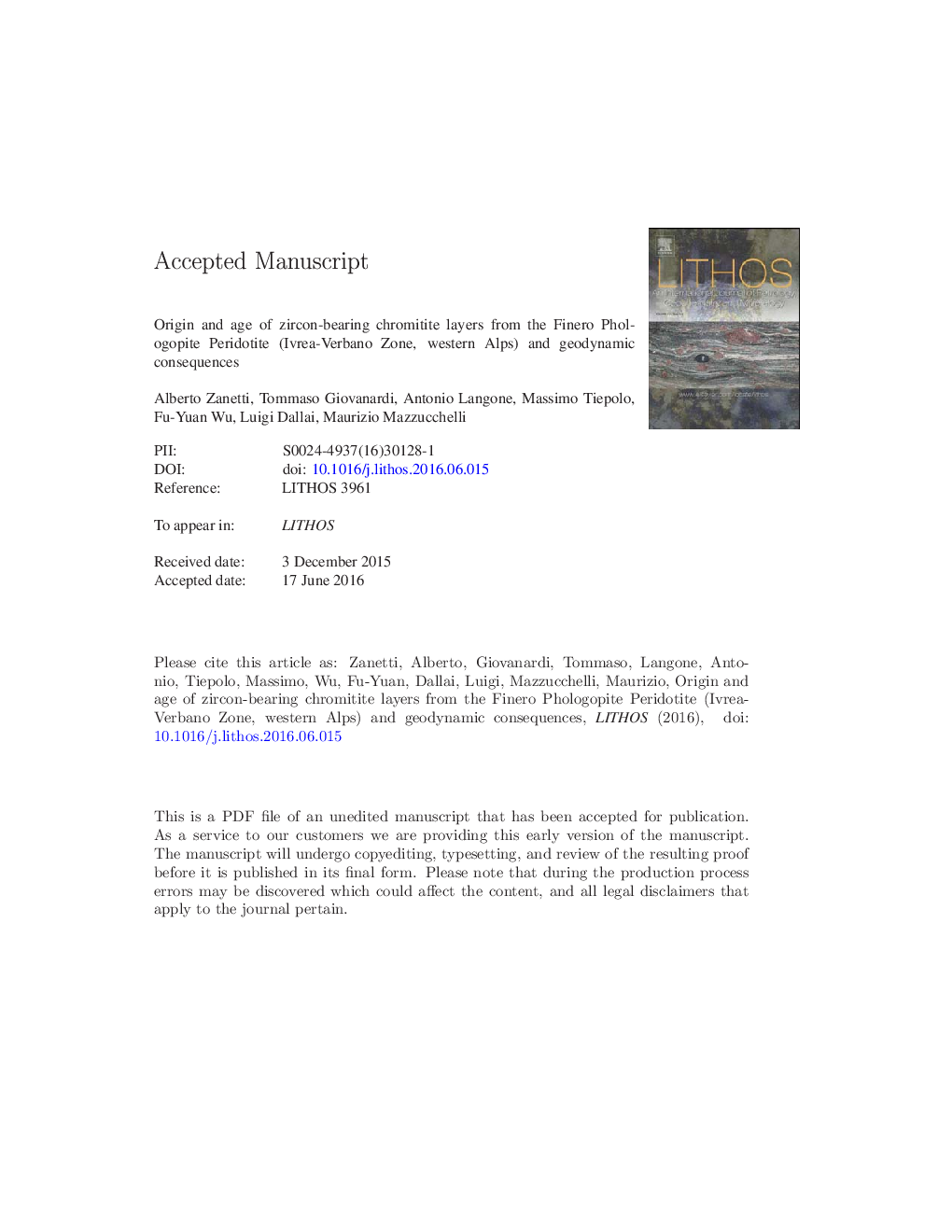| کد مقاله | کد نشریه | سال انتشار | مقاله انگلیسی | نسخه تمام متن |
|---|---|---|---|---|
| 6440475 | 1638642 | 2016 | 60 صفحه PDF | دانلود رایگان |
عنوان انگلیسی مقاله ISI
Origin and age of zircon-bearing chromitite layers from the Finero phlogopite peridotite (Ivrea-Verbano Zone, Western Alps) and geodynamic consequences
دانلود مقاله + سفارش ترجمه
دانلود مقاله ISI انگلیسی
رایگان برای ایرانیان
موضوعات مرتبط
مهندسی و علوم پایه
علوم زمین و سیارات
ژئوشیمی و پترولوژی
پیش نمایش صفحه اول مقاله

چکیده انگلیسی
Field relationships, the sub-chondritic Hf isotopic composition of the zircons (εHf(188) as low as â 5.4), the heavy O isotopic composition of zircons and pyroxenes (δ18O up to 6.9â°), the strict similarity of the trace element composition between the clinopyroxenes and amphiboles from the chromitites and those from the phlogopite harzburgites and pyroxenites forming the typical FPP association, as well as the REE composition of zircons, which approaches equilibrium with the associate clinopyroxene, suggest that the studied chromitites were segregated from melts, highly contaminated from continental crust, during the pervasive cycle of metasomatism recorded by the FPP. An LA-ICP-HRMS survey of chromitite zircon grains has provided Early Jurassic U-Pb ages mostly between 199 ± 3 Ma and 178 ± 2 Ma, with a pronounced peak at 187 Ma. Relevant exceptions are inherited domains of two grains giving Triassic ages of 242 ± 7 Ma and 229 ± 7 Ma, and a third homogeneous zircon giving 208 ± 3 Ma. Our geochronological data and those reported in the literature show that the FPP chromitites have zircon populations with different internal CL textures, but the same sub-chondritic Hf isotopic composition, which define an overall U-Pb age span from ~ 290 Ma to 180. The segregation of the chromitite layers and the main pervasive metasomatism likely occurred in the Early Permian (in a post-collisional, transtensional setting) or before (possibly, in a subduction-related setting). The rejuvenation of the zircon ages was accompanied by a progressive disappearance of the internal zoning, interpreted as the result of a prolonged residence at mantle depths with progressive re-equilibration of the U-Pb system due to thermal perturbations. The age peak at ~ 187 Ma is argued to constrain the timing of FPP exhumation at shallower, crustal levels. This process was characterised by an important reheating event, possibly due to lithospheric hyperextension. The evolution of the FPP appears completely different than that of mantle bodies of the central IVZ (i.e., the Val Sesia-type bodies), which were emplaced within the continental crust, as part of accretionary prisms, at or before the end of the Variscan orogeny.
ناشر
Database: Elsevier - ScienceDirect (ساینس دایرکت)
Journal: Lithos - Volume 262, 1 October 2016, Pages 58-74
Journal: Lithos - Volume 262, 1 October 2016, Pages 58-74
نویسندگان
Alberto Zanetti, Tommaso Giovanardi, Antonio Langone, Massimo Tiepolo, Fu-Yuan Wu, Luigi Dallai, Maurizio Mazzucchelli,